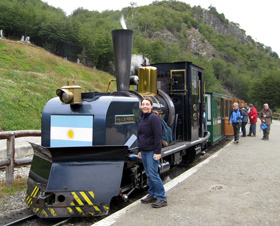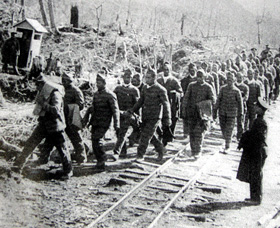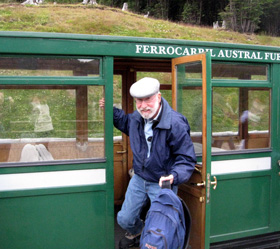Criminals captured by police are often told metaphorically that they have reached the end of the line. In the case of repeat offenders in Argentina in the early 20th century, that statement was literal—they were sent to the prison at the end of the world.
Ushuaia is known as the southernmost city in the world. Located at the southern tip of South America, it is an environment of extremes. The city was founded to establish Argentine sovereignty in the Tierra del Fuego region, and in 1896 a penal colony was set up for repeat offenders. To be sent here was seen as little better than a death sentence.
In order to transport the materials needed for the construction of the prison, a xilocar—a narrow-gauge train with shallow cars that ran on wooden tracks and was pulled by oxen—was constructed. However, it was limited in its ability to transport lumber from the forests, so in 1910 construction of a narrow-gauge railway began. The original steam locomotive that operated on the 15.5-mile line earned the nickname “La Coqueta” because of the little jumps and hops that it made as it chugged along the line.
The train was vital to the prison and the town itself. It transported prisoners to the surrounding forests to do the backbreaking work of logging. The lumber was then loaded onto the train for transportation back to Ushuaia. The prisoners’ efforts provided wood for cooking and heating during the harsh winters, as well as for construction. A large portion of the town, including buildings, streets and bridges, was built by the convicts, and it was not uncommon in the early days of the town to see teams of prisoners walking down the street.
After over fifty years of use the prison was shut down by Argentine President Juan Perón in 1947, and the train was decommissioned in 1952.
Forty-two years later, in 1994, the prisoners’ train was resurrected under the new name of Ferrocarril Austral Fueguino. It offers tourists a chance to ride along a new line that follows the old right-of-way.
There are three steam locomotives that run on the line, and all are fired by oil, rather than coal, in order to minimize the risk of igniting forest fires. They pull heated antique coaches with large windows that offer great views of spectacular scenery.
Leaving Ushuaia the train follows the Pipo River through the Cañadon del Toro as a bilingual guide explains the history and ecology of the area. At the Macarena waterfall, passengers can debark to visit a reconstructed campsite of the Yámana Indians. Continuing on through sub-Antarctic forest, passengers may see high stumps that are remnants of trees cut down by prisoners during the harsh winters, when snow could accumulate to tremendous depths. The next stop is at the entrance of Tierra del Fuego National Park. Here passengers can either debark and continue their journey into the park or return on the train to Ushuaia.
Modern Ushuaia, with its hotels, restaurants, internet cafés and shops, is very different from the conditions endured by its early settlers, and it is difficult to imagine the bleak future that loomed before those who were sentenced to imprisonment and forced labor in a time when the town barely existed. Thankfully, we can now leisurely ponder this thought in the comfort of a car on the FCAF line, a huffing and puffing tribute to those who unwillingly toiled to tame the end of the world.
